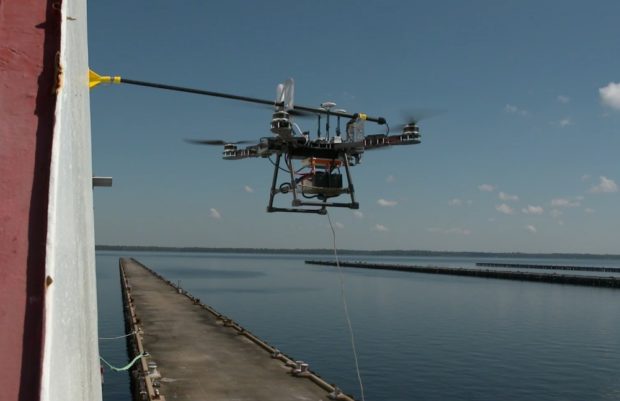has announced that has been granted its sixth full patent from the United States Patent and Trademark Office UNMANNED AERIAL VEHICLE HAVING AN ELEVATED SURFACE SENSOR, US 11,235,890 for its aerial robotic systems with robotic arms and end effectors that perform physical work or tasks, during flight, while in contact with an elevated surface.
Bob Dahlstrom, CEO of Apellix, said:
“This patent further establishes our advances in the use of autonomous and computer controlled aerial robotic systems that physically contact surfaces during flight to modify and do contact-based work on them”.
The patent is for uncrewed aerial vehicle (UAV) systems that perform various tasks to an object by maneuvering near a surface, contacting the surface with a sensor arm, and collecting contact and near contact-based measurements, data, and readings. Apellix utilizes this technology in its Opus X4 NDT (nondestructive testing) systems that take Ultrasonic Thickness (UT, wall thickness), Dry Film Thickness (DFT, paint thickness), and other measurements that fly under full computer control and can execute a series of measurements autonomously.
The Apellix precision-controlled aerial robotics systems are based on its patented software platform and enable moving workers from harm’s way. By adding a robotic arm and an end effector (i.e., a hand with tools) to a software-controlled aircraft we enable it to fly up to a structure, and under full computer control, touch or modify the structure. Thereby performing the dirty, dangerous, and expensive work that needs to be done while keeping workers safe on the ground.
The Apellix Opus X4 NDT systems can collect up to 200 spot measurements per hour, and can automatically feed the data into NDE 4.0, Enterprise Resource Planning (ERP), Preventive Maintenance Checks and Services (PMCS), Integrity Management Systems (IMS), as well as the secure Apellix Flight Logs data and report generation system.
Apellix does not change the underlying cleaning, coating, or testing and measurement technology, instead we integrate existing technology into our robotics platform and make it work better, safer, faster, and with more robust results. We create economic value by improving on human performance, by eliminating or reducing the need for scaffolding, man-lifts or workers suspended by ropes, by turning high-value assets around quicker, and by bringing science to the worksite through our introduction of computer control and data collection.
In certain applications, such as testing a 100-meter-tall refinery flare stack, our aircraft can save $5 or 10 million dollars in down time, and up to a million dollars in scaffolding costs on a single project.
Source: Press Release

